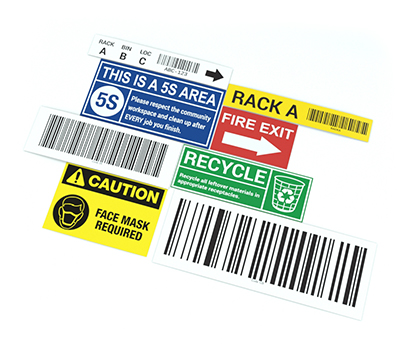
When labeling wires, it is important to think through what information will be on each label. If the label is required by OSHA or some other agency, the specific information that is necessary will be included in the regulatory documentation. In most cases, however, wire labeling is not strictly required, which means you have a lot more flexibility when it comes to what will be included on the labels themselves. When this is the case, it is a good idea to think about what types of things will provide the most benefits to the facility.
- To & From Information: One of the most beneficial items that you can include on a wire label is where the wire is coming from, and where it is going to. This will provide many benefits to those who are working with the wires. If there is an outage of any type, having the to & from information readily available can make it very simple to troubleshoot any type of wiring problem. It also makes it so you don’t need to trace the wire out if you want to upgrade or replace it.
- Electrical Information: Whether it is an electrical wire, or a computer wire, there will be electrical charges traveling through the wire. Including the details about how much power the wire can have will help to ensure those who work with an around the wires can take proper safety precautions. When working with low-voltage wires, for example, someone can simply perform the work without any need of personal protection equipment. With higher voltage wires, however, gloves or other PPE becomes necessary.
- Install Dates: There are many times when knowing how old a wire is can be beneficial. To help with this, many people will include the install date on wire labels. This allows people to look at a wire and quickly determine whether it is time to replace it, or if the wire is still going to be in good shape.
- Type of Wire: In some cases, it is easy to tell what type of wire something is just by looking at it. In others, however, that is not so simple. Using wire labels to identify 110 vs 220 wires, for example, can be helpful. Identifying fiber optic wires is another good idea as they shouldn’t be bent as much as normal electrical wires.
Taking the time to include all important information about a wire will help make it easier to work with, troubleshoot, replace, and stay safe long into the future. While it may take a little bit of extra time and effort now, it will surely pay off over the years.
Similar Questions
- What is wire marking?
- How do you mark a wire?
- Is the black wire the hot wire?
- How can wires be tested to tell if it’s hot?
- Why is wire marking important?
- Does OSHA regulate wire marking?
- What are wire marking standards?
- Why should wire marking standards be followed?
- What are wire color codes?

